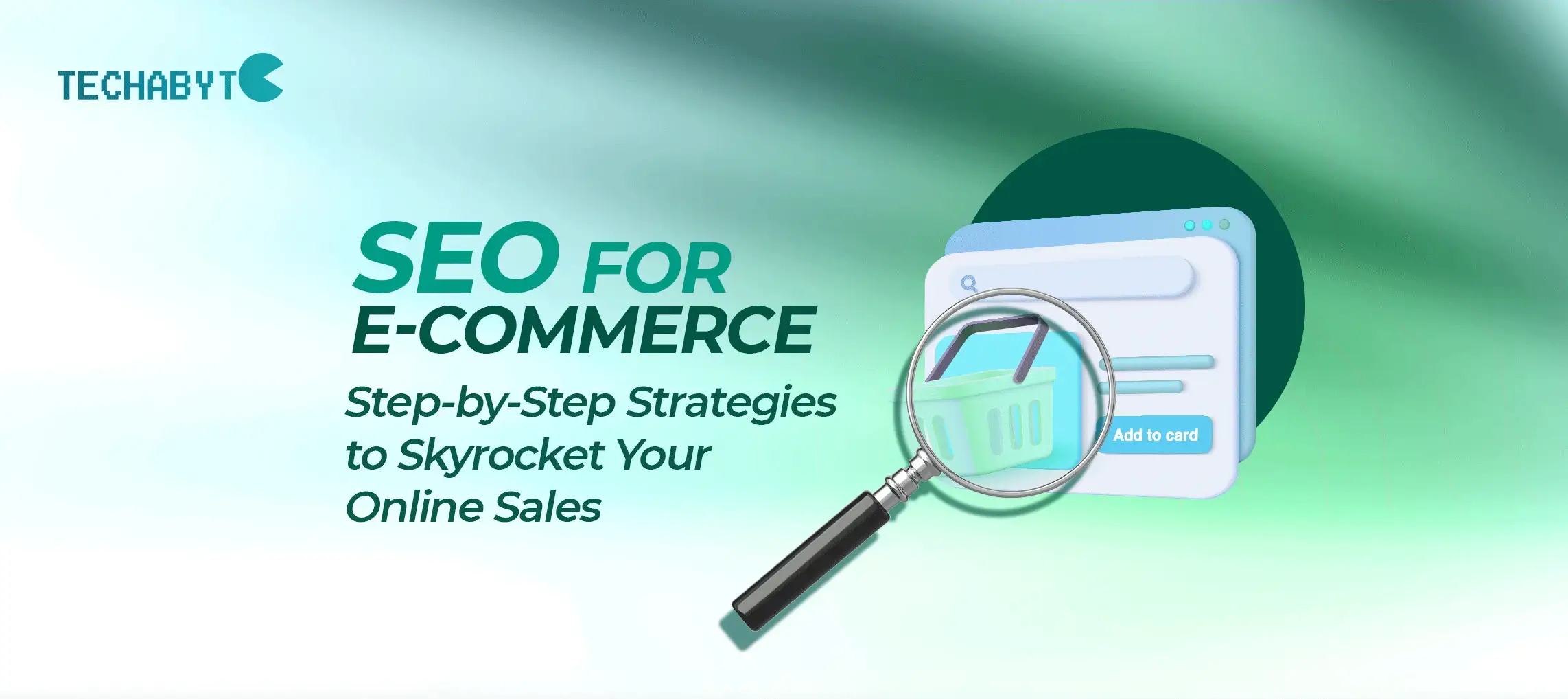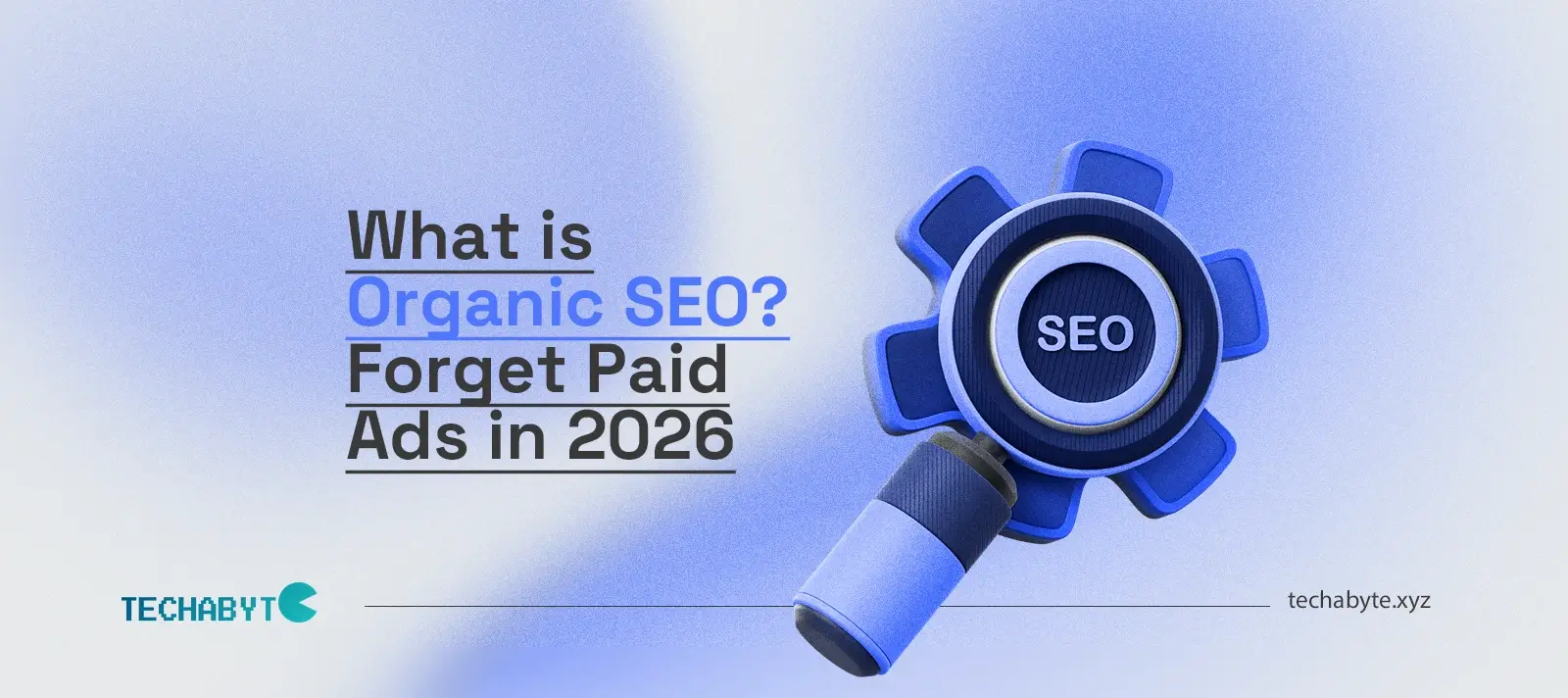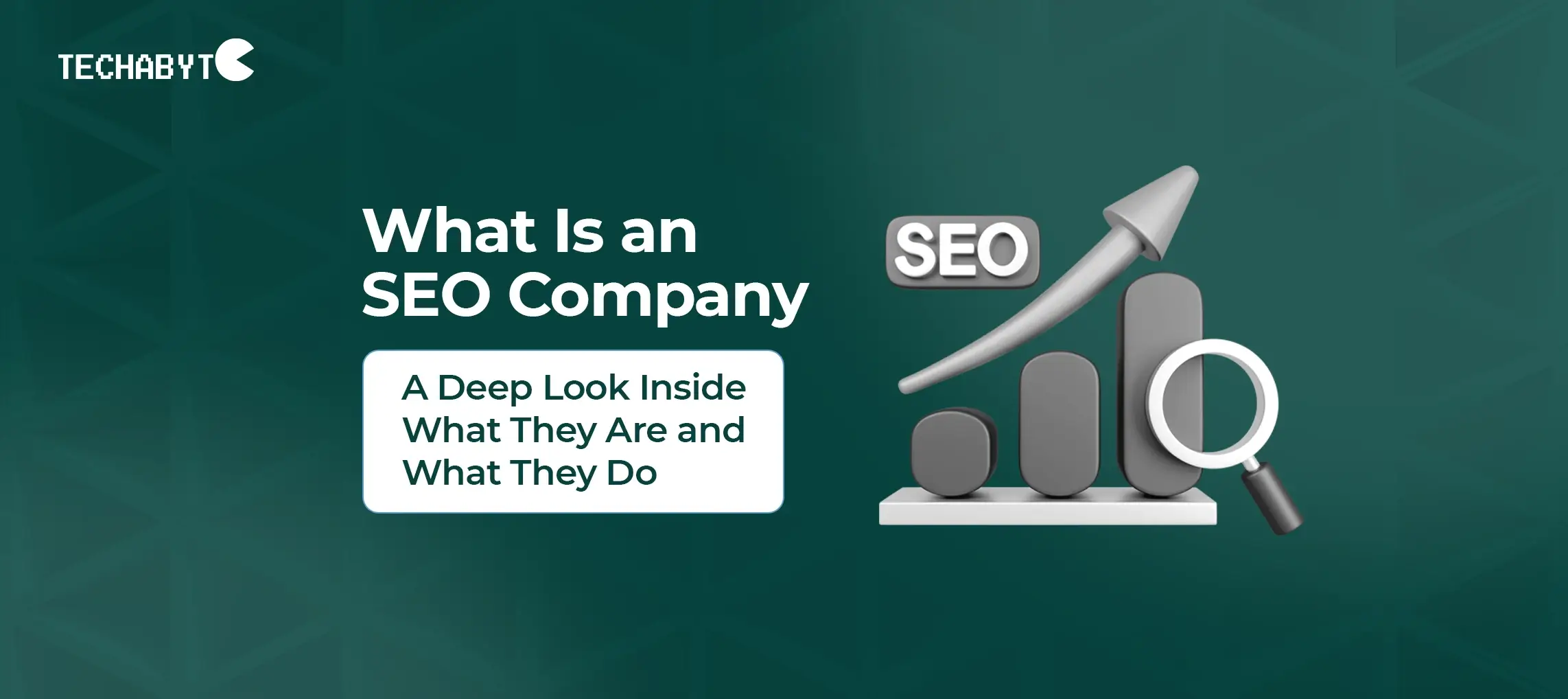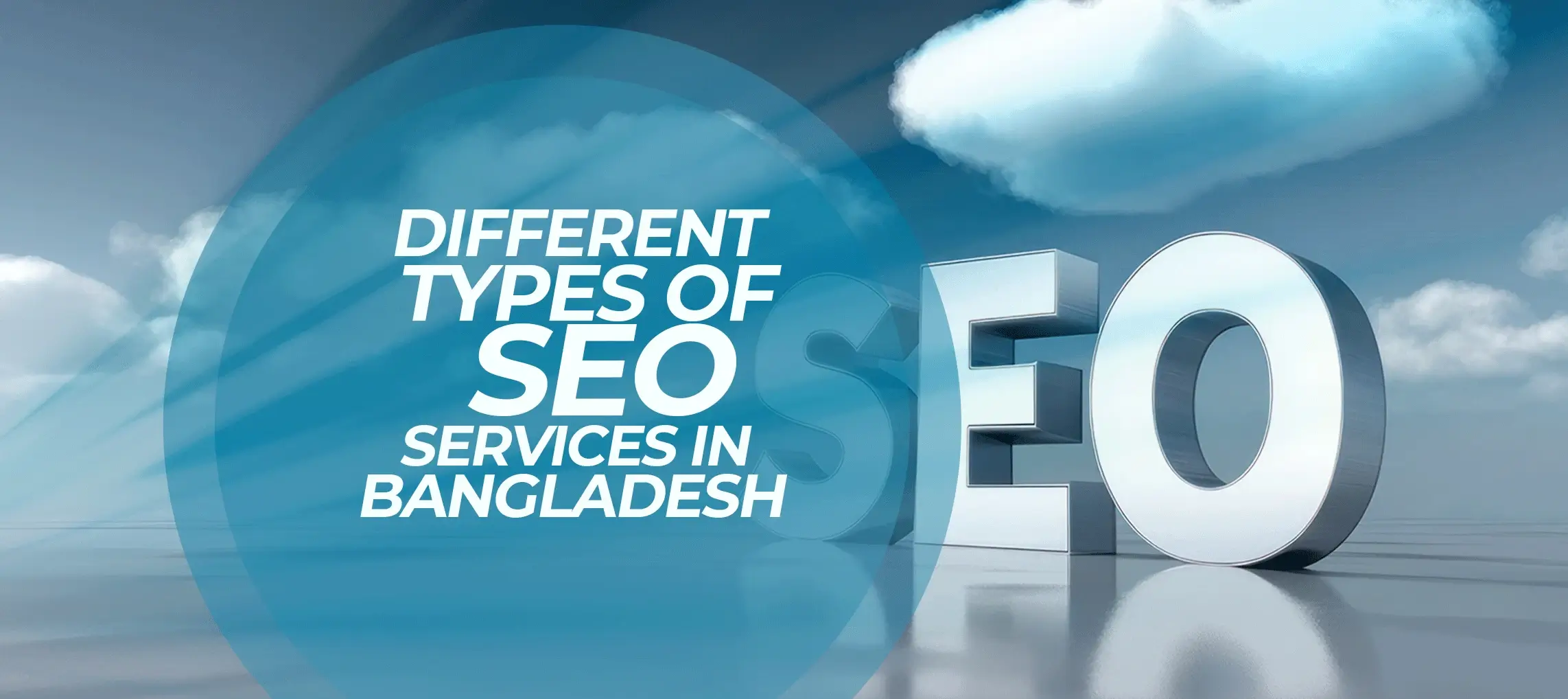Paid ads are expensive. Relying on paid advertising alone is not a good approach, hence it makes online stores face great challenges with their E-commerce SEO already as consumers transform into AI-powered search, voice commerce, and visual shopping trends. Thus, that explains why SEO for E-commerce has been embraced as the best long-term growth hack. Building product and category pages while leveraging content marketing and earning authority with link-building plus getting future-ready with AI-driven and omnichannel strategies are discussed step by step in this blog towards strong SEO foundation building. By the time you get to the end of this article, you’ll know exactly why SEO is important and how to use it practically to increase your sales, visibility, and customer trust.
Key Takeaways
- SEO for E-commerce is a cost-effective and long-term solution compared to rising paid ad costs.
- Technical SEO, site structure, and Core Web Vitals lay the foundation for higher rankings.
- Keyword research, on-page optimization, and content marketing drive product visibility and conversions.
- Authority growth through link building and partnerships strengthens brand credibility.
- AI, voice search, and omnichannel SEO are shaping the future of e-commerce growth.
Introduction
E-commerce is one of the most competitive digital industries nowadays because millions of stores are fighting for just a few consumer attentions. Results from search powered by Artificial Intelligence, Voice Commerce, and Visual Search Trends have changed considerably how consumers think about shopping online. Businesses can no longer rely only on traditional marketing methods; they have to adopt a long-term strategic plan that will ensure product visibility right at the time potential buyers are searching for their products.
This is where SEO for E-commerce comes to the rescue. As opposed to paid advertising that stops delivering results the moment the budget runs out, SEO is a cost-effective sustainable means of building organic traffic and brand trust, leading to sustainable sales. In this tutorial, You can learn technical SEO processes, keyword research and strategies, on-page & content strategies, as well as link building techniques, advanced AI-powered techniques & best practices for measuring the success.
SEO for E-commerce – Why It Matters
The Evolving E-commerce Landscape
The world of online shopping has gone far beyond simple keyword-based queries. Phrases like Google AI, Bing Copilot, and Perplexity mean that conversation-based answers come with contextual understanding. This, therefore, indicates that AI search optimization is getting to be just as important a matter as the classic keyword targeting. And meanwhile, voice commerce SEO and visual search are rising as new pathways for clients to product discovery.
For instance, a user may now look through the phone camera of their device at a pair of shoes to search for identical items through Google Lens or ask Alexa to buy again the favourite product. In such environment, reviews, trust signals, and brand authority have turned into potent ranking factors. Stores that blend optimized SEO with real good user engagement gain higher visibility and credibility in the long term.
SEO vs. PPC – Which is Better for E-commerce?
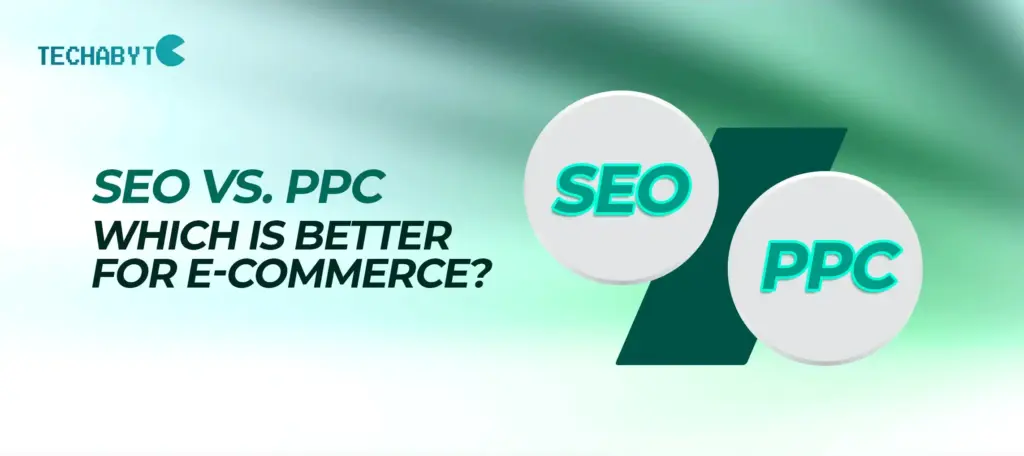
Many e-commerce owners also, understandably, grapple with whether to invest in paid ads or to focus on getting their sites optimized for search engines. After all, paid ads can benefit from instant visibility but are also getting more expensive because of increasing cost-per-click rates. E-commerce SEO vs PPC comparisons always depict that the latter is much more scalable and provides a better long-term return on investment.
The best strategy usually involves using both. For example, paid advertising can give quick wins during a promotion when combined with a steady flow of organic traffic from SEO. Over time, companies investing in SEO reduce their dependence on advertising and thus reduce the cost of marketing digitally while having more predictable sales.
Step-by-Step SEO Strategies for E-commerce Success
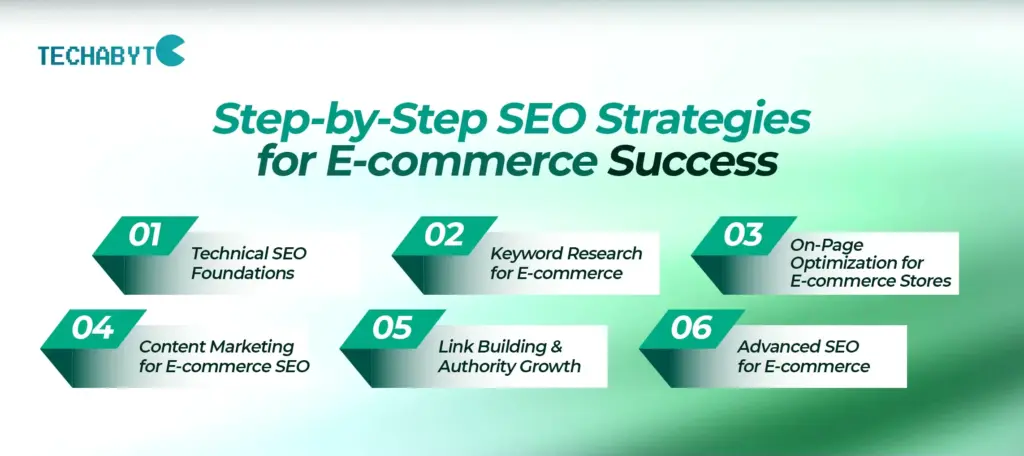
Step 1 – Technical SEO Foundations
Site Architecture & Crawlability
Keep a clean flat structure for your e-commerce site so that Googlebot will be able to fetch and index your product pages readily. Internal linking carries as much weight, too. Make sure that category and product pages are easily found. For example, platforms such as Shopify and WooCommerce already provide SEO-friendly site hierarchy out-of-the-box, but proper optimization makes a huge difference in rankings.
Core Web Vitals & Mobile UX
Google has made it clear that Core Web Vitals and mobile performance are central to SEO rankings. Fast-loading pages, mobile-first design, and techniques like lazy loading images improve both user experience and visibility. Tools like PageSpeed Insights and the Core Web Vitals API help diagnose and fix performance issues.
Security & Trust
E-commerce thrives on trust signals. Apply HTTPS, show off your secure checkout, and meanwhile use schema markup for products to share even more details, which increases security plus search visibility. Customers and search engines love a site that looks good and safe.
Step 2 – Keyword Research for E-commerce
Intent-Driven Keyword Mapping
Good SEO strategy begins with an understanding of search intent. Queries such as ‘best running shoes’ attract researchers, whereas transactional queries such as, ‘buy Nike Air Zoom Pegasus online’ capture buyers and other variations in between. Tools include Ahrefs, SEMrush, and suggestions from Google itself powered by artificial intelligence.
Long-Tail & Platform-Specific Keywords
Long-tail and platform-specific keywords can boost your e-commerce in an unimaginable way. For example, generate keywords of Amazon SEO or Google Shopping and be on the right side of high-converting searches. Localized keyword allows stores to catch geo-specific buyers as well.
Entities & Semantic SEO
AI search pays a lot more attention to understanding the context. Entities such as brand names, product attributes, and features included improve relevance for semantic search. For instance, ‘lightweight running shoes’ or ‘breathable fabrics ‘ are words that would relate well with customers as well as the search algorithms.
Step 3 – On-Page Optimization for E-commerce Stores
Product Page SEO
Titles, meta descriptions, and schema markup for every product page Updated and new. Besides the tech aspects, weave keywords into emotionally charged narratives that inspire action. Let AI churn out first drafts-human touch makes them real and believable.
Category Page Optimization
Category pages Typically those are the queries with enormous volumes of searches, such as “ women’s running shoes.” Give these a strong kick with keyword-filled H1s , some clean filters , and a structure that loves SEO which builds your site’s hierarchy while making it easier to use.
Visual & Multimedia SEO
With visual shopping on the rise, optimizing alt-text, product videos, 3D previews, and AR experiences has become essential. Google Lens and Pinterest SEO can bring valuable traffic to visually rich e-commerce stores.
Step 4 – Content Marketing for E-commerce SEO
Blog Content That Drives Conversions
Blogs still count as very strong tools in driving e-commerce sales upward. Buying guides, and comparisons attract preconversion traffic into the funnel. Lists of the “best product” usually convert very well. Content based on FAQs sets up your store for answers pulled by AI-driven searches.
User-Generated Content & Reviews
Customer reviews are long-form content. They drop long-tail keyword variations naturally while building trust and engagement at the same time. Authentic, user-generated content is a direct ranking factor in Google’s algorithm.
Shoppable Content & Interactive Blogs
Contemporary content plans comprise readable blogs where individuals have the option to buy items directly from the article. A blog named “Top 10 Hiking Backpacks” can incorporate direct connection joins with item pages, mixing content and business perfectly.
Step 5 – Link Building & Authority Growth
Digital PR & Brand Mentions
Niche publications, influencer blogs, or HARO can shoot up your brand’s authority by several notches. AI-based outreach tools make the process easier for you to land those golden backlinks.
Partnerships & Collaborations
When fitness brands collaborate with nutrition companies, it forms natural link-building avenues. This strategy enforces your SEO and finds new customer bases at the same time.
Internal Linking Strategies
Never forget the strength of internal linking. Features such as related products, or people also bought improve crawlability while leading your users toward more purchases.
Step 6 – Advanced SEO for E-commerce
AI & Automation in SEO
AI is part of digital marketing now. From brief content made by AI to predictive SERP tools, automation speeds up optimization. Shopify and WooCommerce now have built-in apps powered by AI for easier steps.
Voice & Visual Search Optimization
Optimizing for voice and visual search is a must. Adding schema markup for voice queries and detailed alt-text for images helps capture audiences using Google Lens, Siri, or Alexa for shopping.
Omnichannel SEO Integration
People today go from one place to another- TikTok, YouTube Shorts, Instagram, and search engines. An omnichannel SEO strategy makes sure that the product stays visible in all these areas getting traffic from different places.
Measuring SEO Success for E-commerce
Key Metrics to Track
Organic traffic, conversion rates and revenue attribution model are the major key metrics that define how successfully SEO is working towards making a sale. GA4, Search Console. Looker studio dashboards present insights.
Common SEO Mistakes to Avoid
Most of the eCommerce stores just fail as they copy product descriptions from suppliers or do not care about mobile UX. Pages with thin content and poor Core Web Vitals also hurt rankings. Not making these mistakes, growth stays.
FAQ
1. How does SEO help reduce dependency on paid ads for e-commerce stores?
While quick visibility is provided by Paid Ads, results stop as soon as the campaign is paused. SEO, on the other hand, builds over time an increasing base of organic traffic. When the store ranks higher on search engines, revenue inflow continues without having to pay for every click. This reduces overall marketing costs and improves long-term profitability by reducing dependency on platforms where ad costs are continuously rising. Many successful online stores have used SEO as their workhorse growth engine, reverting to paid ads only for seasonal campaigns or when launching new products.
2. What is the role of AI search engines (Google AI, Bing Copilot, DeepSeek) in e-commerce SEO rankings?
AI-based search no longer relies on keywords they consider user intent, context, and entities. For example, a query such as “best budget running shoes for summer” will enable the AI system to establish the user’s intent, review different opinions, and recommend trusted brands. Therefore, online stores should be optimized for semantic SEO, structured data, and content that answers all possible questions of the consumers in detail. The stores that will implement AI search optimization have much better odds of being featured in conversational answers, product comparisons, and recommendation snippets.
3. How long does it take to see results from e-commerce SEO?
SEO is a long-term game, not some quick band-aid. Depending on your niche, competition, and existing state of the website, you may start seeing early improvements within 3-4 months. Major uplift in traffic and sales and keyword rankings usually takes about 6-12 months. If you are in extremely competitive product categories then it could take even longer. Perform site performance improvement continuously; publish new content and build authority-consistently because that effort compounds over time to generate sustainable sales growth.
4. Should I invest in multilingual SEO if I sell products internationally?
Yes, multilingual SEO matters for businesses in different regions. A consumer based out of Spain will always prefer to buy when offered product descriptions and checkouts in Spanish, similar to a buyer from France who would expect content in French. Search engines prioritize language-specific localized content because it makes the user experience much better. With multilingual SEO, you not only rank in different countries but also build trust with international buyers which directly impacts conversions plus brand loyalty.
5. How does local SEO help e-commerce businesses in Bangladesh (or region-specific markets)?
Local SEO works great for businesses targeting a certain area, city, or country. For instance, an e-commerce apparel brand based out of Dhaka can target such keywords as “women’s fashion in Bangladesh” or even “best online shoe store in Chattogram.” A Google Business Profile, local keywords, and region-based blog posts will boost local rankings. This works very well in countries like Bangladesh because most buyers are searching for nearby trusted online stores. Local SEO allows small businesses to fight international brands by getting highly relevant customers from their particular area.
6. What is the difference between Shopify SEO and WooCommerce SEO?
Shopify and WooCommerce do support ecommerce SEO but vary in approach. Shopify provides clean URLs, automatic sitemaps, and mobile-friendly designs; thus, it is quite competent in terms of built-in SEO. Being user-friendly, its customization features are somewhat limited. Since WooCommerce is a plugin on WordPress, the flexibility in SEO optimization can further be played up through plugins like Yoast or Rank Math. While that makes Shopify great for beginners looking for simplicity, WooCommerce does the best targeting of advanced users looking for total control over their SEO setup. The two, however, call for technical, on-page, and content SEO strategies for each to do so fruitfully.
7. Can SEO improve product visibility on marketplaces like Amazon, Daraz, or eBay?
Yeah, exactly. Online marketplaces which include Amazon and Daraz maintain an internal search engine basically comparable to Google. Optimum is the product titles, descriptions, bullet points as well as keywords for ranking within these platforms. For instance, proper long-tail specification like “wireless Bluetooth headphones under 2000 taka” for the specific item listed will give you an appearance on extremely targeted searches so specifically taken. The actual influence of customer reviews and ratings on marketplaces like SEO is that positive feedback signals credibility, in this case to both the buyers and the algorithms.
8. Should e-commerce stores prioritize blog content or product descriptions for SEO?
Both are important aspects in content, but they have different jobs to do. Product descriptions have plain information that helps them rank for transactional keywords and help visits convert into purchasers. Meanwhile, blog content attracts a broader audience as it contains information that gets indexed on informational and comparison-oriented keywords. So if you write a blog post titled “Top 10 Running Shoes for Beginners,” obviously, readers would be headed towards your product pages. The right way is to balance between the two: optimize product pages for direct sale with blog content capturing ‘would be’ buyers at an earlier stage in their buying journey.
9. How do abandoned carts and checkout UX indirectly affect SEO performance?
Abandoned carts do not directly influence SEO rankings but the user experience leading to them does. If people are checking out slow loading pages, poorly designed layouts, or complicated forms then that means a higher bounce rate as well as lowered conversions. This gives negative signals to search engines like Google when they evaluate the quality of your site. A smooth checkout experience improves engagement increases sales and sends positive signals that can indirectly boost your rankings.
10. What SEO strategies work best for small e-commerce stores competing with big brands?
Small e-commerce businesses might not have the ad budget of the largest brands, but they can still outsmart them with the right SEO strategy. Long-tail keywords, niche-specific products, and local SEO often trump traffic volume for high-competition terms in an organic ranking model. Authentic customer reviews, good content depth and social visibility make trust in other good maneuvers. Moreover, collaboration with influencers or other complementary businesses helps small stores build authority quickly. With relentless work, even small e-commerce stores can make substantial remunerations from the site by attracting numerous loyal customers.
Conclusion
In the fast change of the digital world, one thing is for sure: SEO stays as the main support of lasting e-commerce growth. While ad costs keep going up, putting money into SEO for E-commerce gives long-term return on investment, better visibility and higher level of customer trust. To remain competitive in search driven by AI, now is the right time to secure your store with tested SEO strategies.
If expert guidance is what you seek, work with a reputed SEO agency in Bangladesh to give that professional edge to your store while competing against the bigger brands. Begin optimization today for long-term success.

